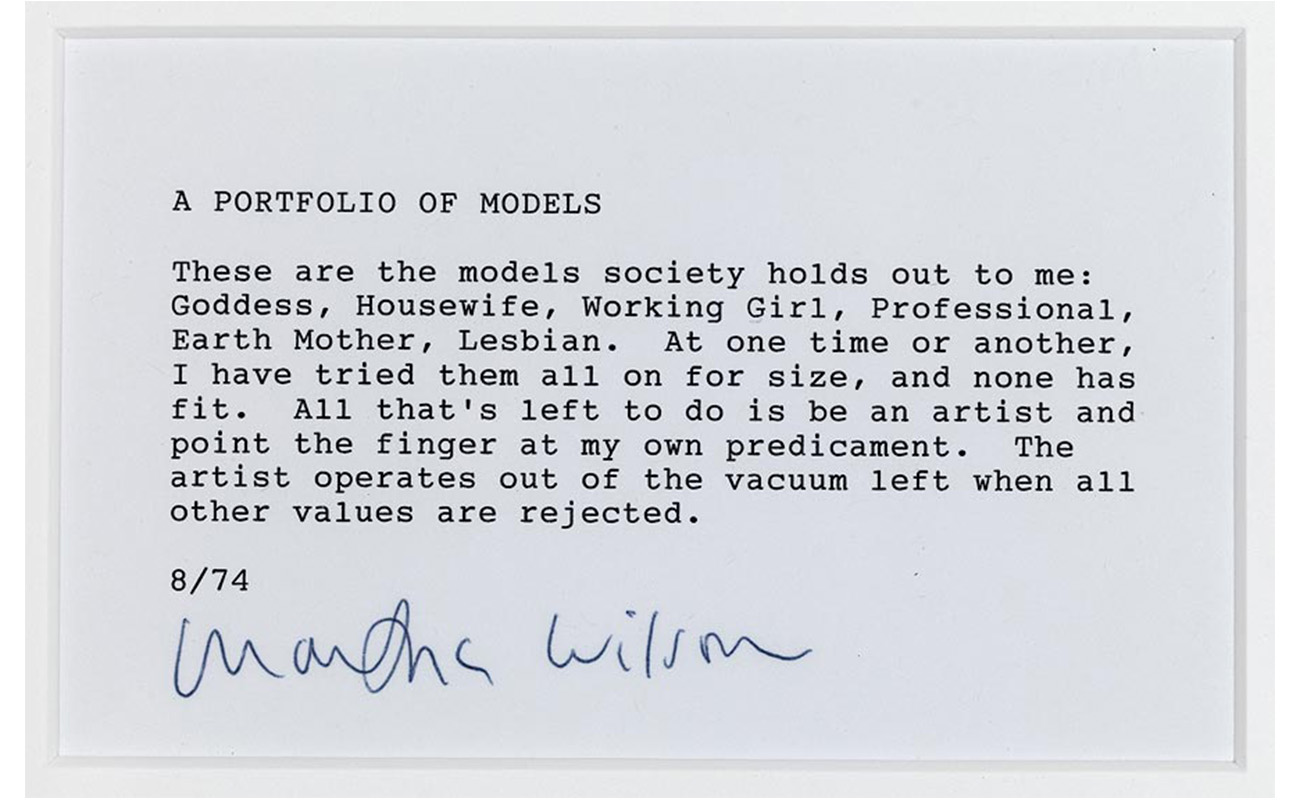
Martha Wilson: A Portfolio of Models
Guest blogger Saraphina Masters is a Smith College student, class of 2017, majoring in Classical Studies and Art History. She was the 2013-2015 STRIDE Scholar in the Cunningham Center for Prints, Drawings, and Photographs.
These photographs are featured in the exhibition Women’s Work: Feminist Art from the Collection, on view until January 3, 2016. Martha Wilson will be speaking at Smith on September 30.
Martha Wilson is regarded as one of the pioneering feminist artists of her time, and rightly so. Working in multi-media that prominently features digital work, Wilson has spent the greater part of her career exploring the female body and what it is to be feminine within the confines of society. She studied and taught in Halifax, Nova Scotia before moving to New York to be more expressive as a young, female artist. Wilson’s origins are in textual and language based art, and though she is best known for her physical, performance art, the presence of the written word is still visible and relevant. This potent combination can be seen in her work entitled A Portfolio of Models. This collection of six images, each with their own accompanying text, is prefaced by a separate written introduction that reads:
In her series of six photographs, Wilson portrays six separate women, all of whom exist in highly disparate spheres of society and are presented as the six archetypes of femininity. As she is the only model, Wilson modifies her appearance in order to cast herself as each character. Clothing, hair, and makeup, as well as pose and posture, all comprise the woman whom Wilson is meant to represent. The miniature character analysis that is paired with each image examines the women in relation to their place in society, their intelligence, and their sexuality.
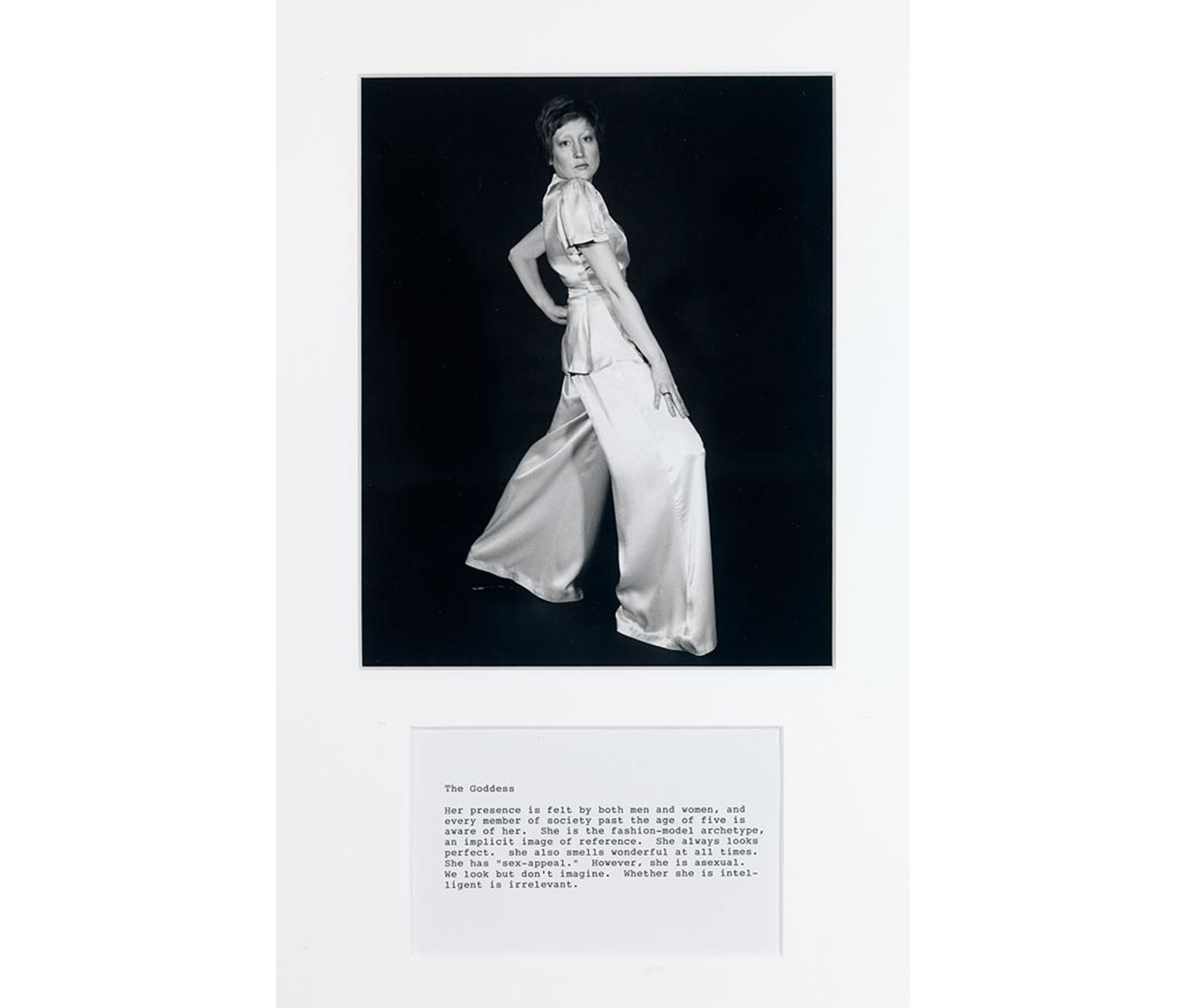
Martha Wilson. American, born 1947. The Goddess from A Portfolio of Models, 1974–2008. Gelatin silver print with typewritten text. Purchased with the Dorothy C. Miller, class of 1925, Fund. SC 2011.27.2.
One fascinating aspect of these women and their textual biographies is that each woman’s paragraph relates her in some aspect to the first woman depicted: the Goddess. The Goddess is presented as the perfect woman: relevant and attractive to all members of society. Wilson casts herself as the Goddess by wearing a silk suit that emulates quality and striking in a dramatic, sensual pose with an impassive look on her face. Her appearance and even smell is perfect, and though she is attractive, she is too far removed from reality and thus asexual. Interestingly, Wilson states clearly that the Goddess is “an implicit image of reference”. The other portraits in this series support that statement in that the Goddess is mentioned in all following descriptions and exists as a constant model to be imitated.
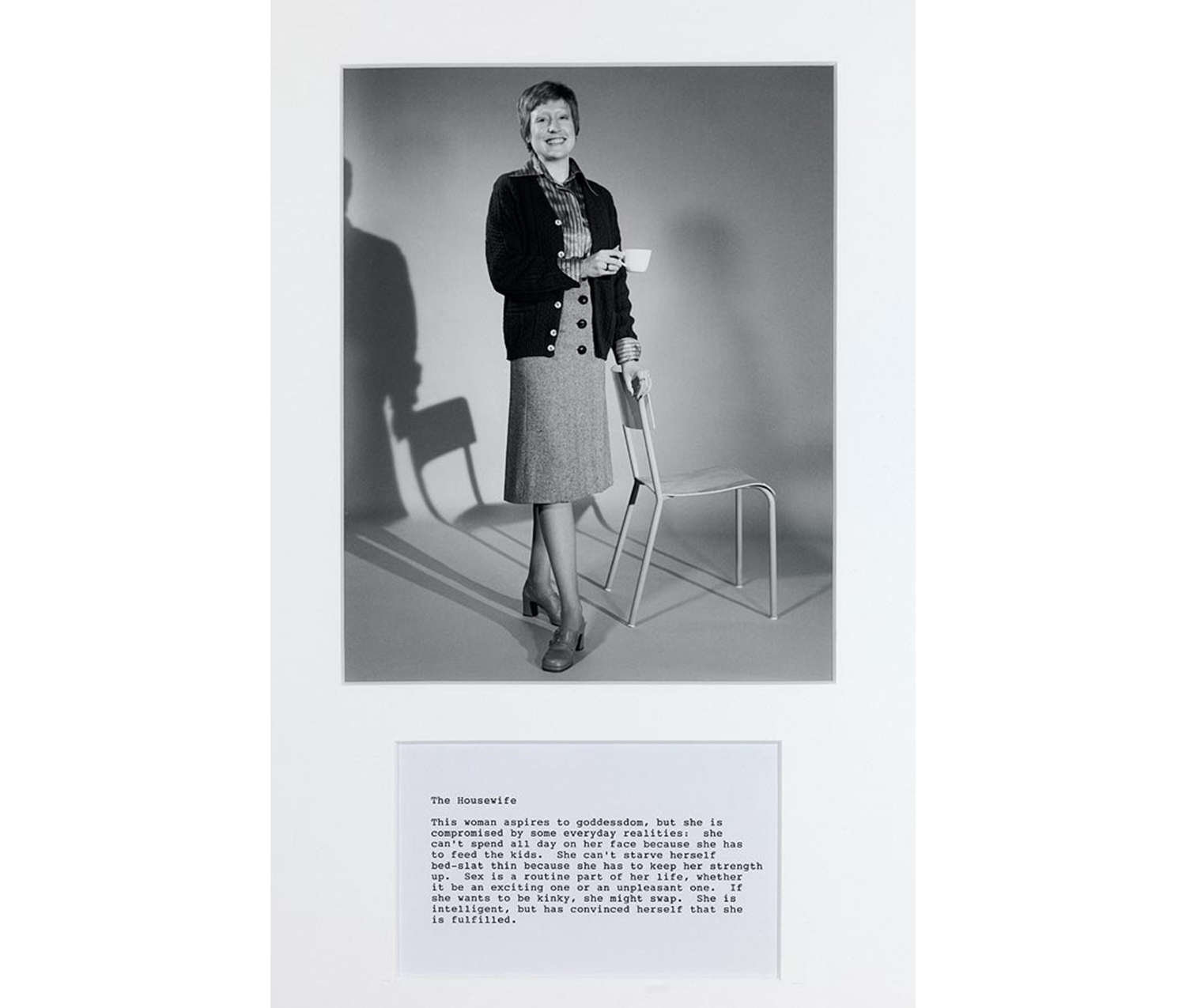
Martha Wilson. American, born 1947. The Housewife from A Portfolio of Models, 1974–2008. Gelatin silver print with typewritten text. Purchased with the Dorothy C. Miller, class of 1925, Fund. SC 2011.27.3.
The Housewife is, physically at least, the opposite of the Goddess. Conservative clothing, a poised stance, and a frozen smile paired with a cup of coffee give the impression that this is a woman who expresses few of her true emotions. Wilson notes that the Housewife “is intelligent, but has convinced herself that she is fulfilled.” This could be a commentary on the sacrifices that Wilson perceives full time mothers and wives to be constantly making. The Housewife aspires to be like the Goddess, but the realities and practicalities of her everyday life, such as feeding her children, limit her.
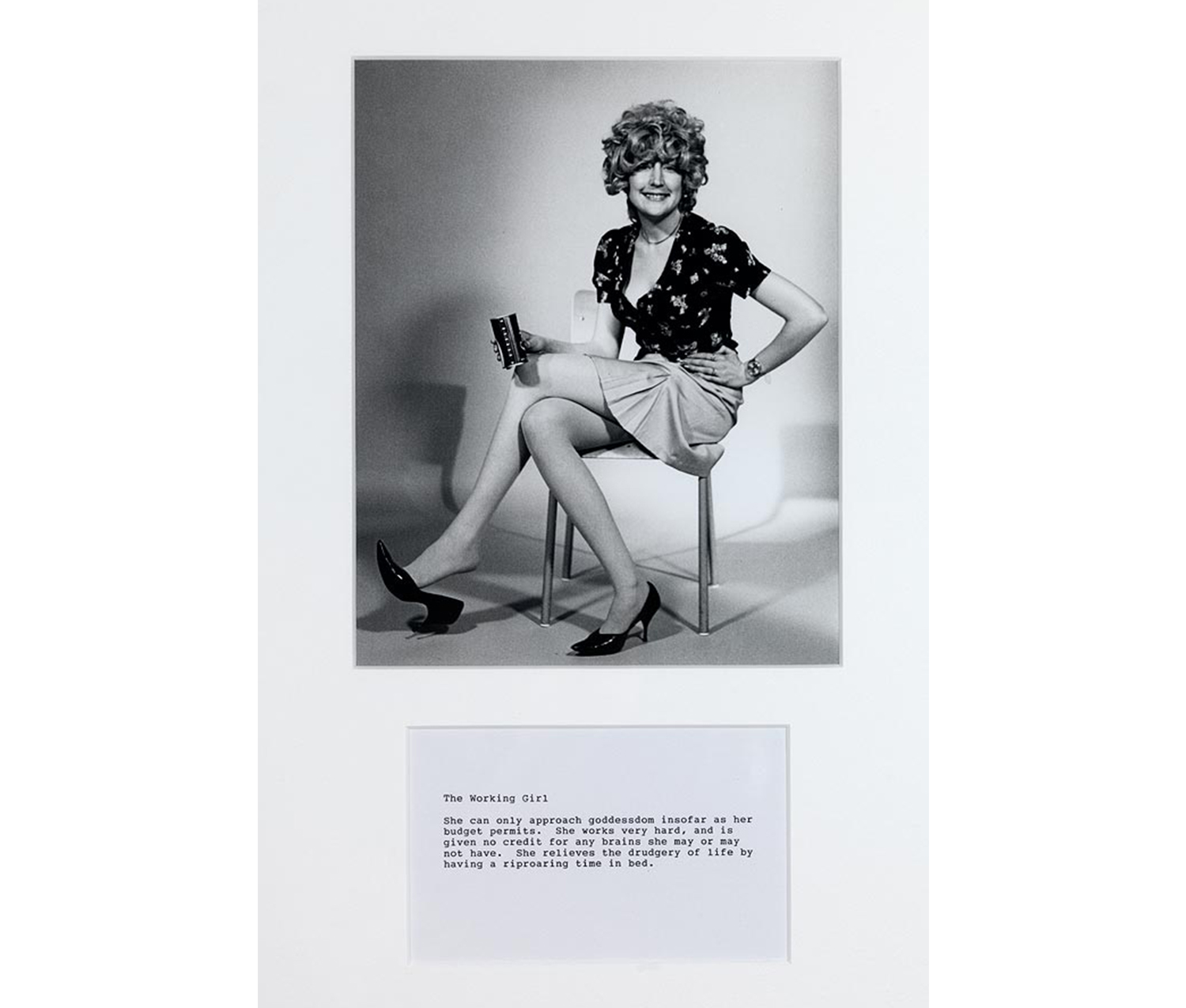
Martha Wilson. American, born 1947. The Working Girl from A Portfolio of Models, 1974–2008. Gelatin silver print with typewritten text. Purchased with the Dorothy C. Miller, class of 1925, Fund. SC 2011.27.4.
The Working Girl is another departure from the ever-present standard of the Goddess. To portray her, Wilson wears a short skirt and low floral blouse that, paired with a tall wig and a loose high-heeled shoe, characterizes the Working Girl as lower-class and less refined. The artist both implies visually and states textually that this woman is barred from the ideal of the Goddess by her budget. Her intelligence is questionable and her work ethic, though admirable, will never earn her credit or praise. The woman that Wilson presents here is evokes pity as well as resignation.
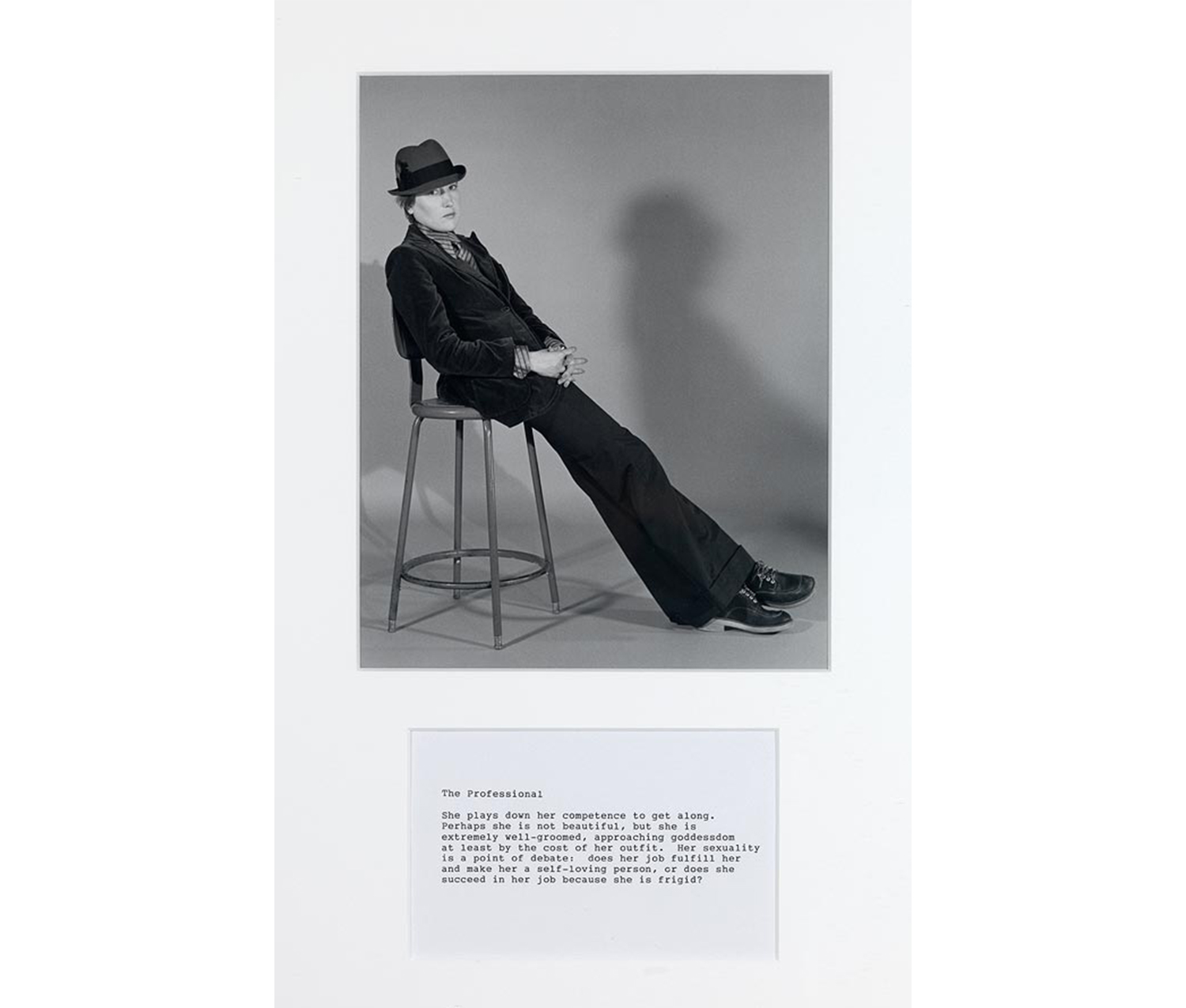
Martha Wilson. American, born 1947. The Professional from A Portfolio of Models, 1974–2008. Gelatin silver print with typewritten text. Purchased with the Dorothy C. Miller, class of 1925, Fund. SC 2011.27.5.
Wilson represents the Professional with a somber expression that matches the dark color of her masculine pants suit. Her hat hides her hair and the posture of her body on the tall chair indicates confidence and nonchalance. This is a woman who actively participates in the professional world, but according to Wilson, “plays down her competence to get along.” In saying this, Wilson is addressing the place of women in the workforce and the adjustments they must make in order to fit with society and its expectations of them. The Professional contrasts the Working Girl in that the high price of her outfit is the only way she relates to the Goddess. The sexuality of the Professional is questionable in this presentation; it may be her job that fulfils her or she may do her job because she is unfulfilled.
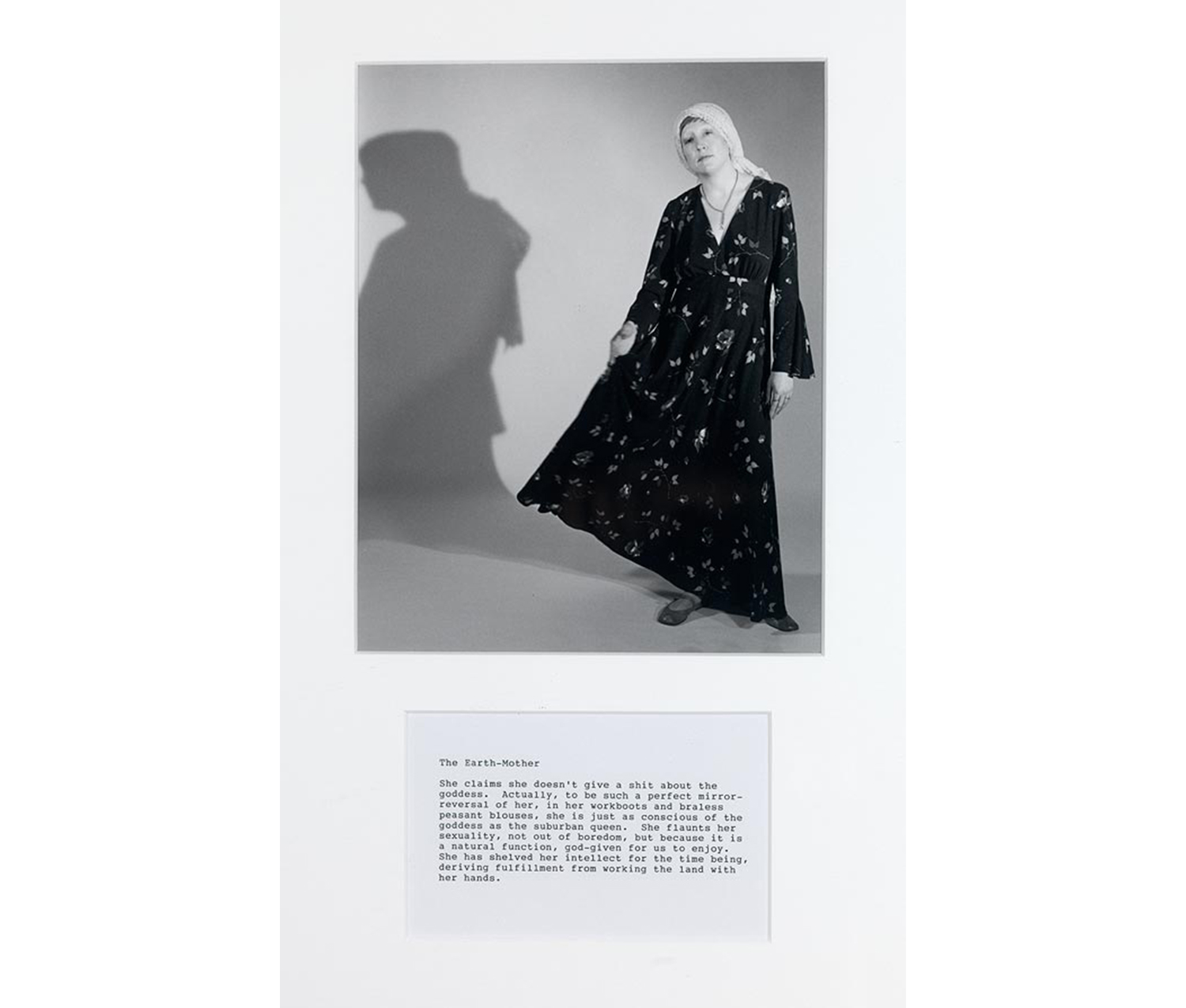
Martha Wilson. American, born 1947. The Earth Mother from A Portfolio of Models, 1974–2008. Gelatin silver print with typewritten text. Purchased with the Dorothy C. Miller, class of 1925, Fund. SC 2011.27.6.
The Earth-Mother, both physically and mentally, is the “perfect mirror-reversal” the Goddess. Wilson wears a long, loose-fitting floral dress and a white head scarf, indicating that appearances are not important to this type of woman. Wilson believes that such pointed contrariness from the Goddess is indicative of the Earth-Mother’s hyper-consciousness of that refined role model. She casually regards her sexuality as natural and inherent and her intellect is secondary to her connection to physical labor and the land.
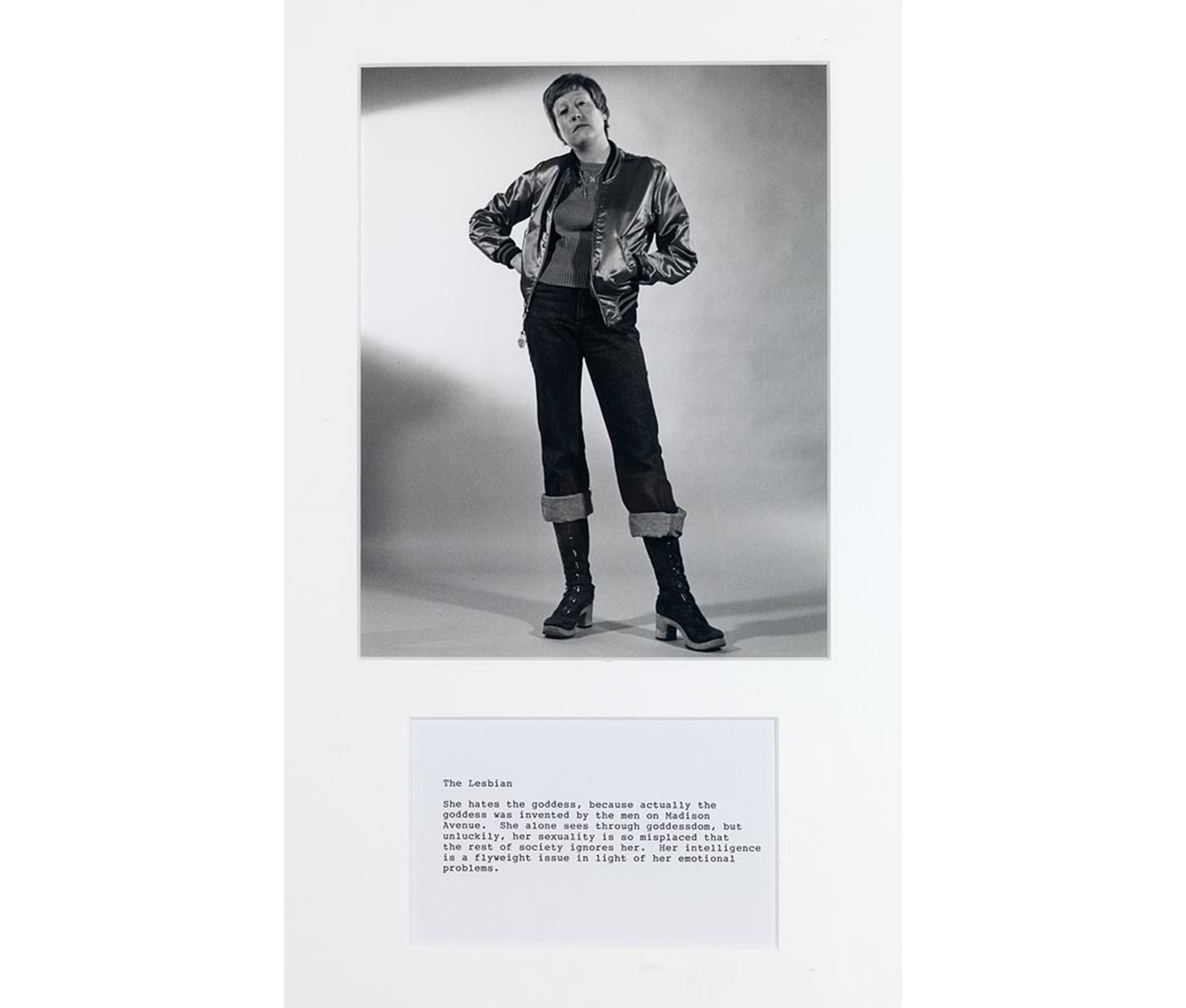
Martha Wilson. American, born 1947. The Lesbian from A Portfolio of Models, 1974–2008. Gelatin silver print with typewritten text. Purchased with the Dorothy C. Miller, class of 1925, Fund. SC 2011.27.7.
The Lesbian is, according to Wilson, the ultimate foil to the Goddess. Wilson as the Lesbian wears chunky boots, a jacket and a firm stance paired with a contrary tilt of the head. This woman perceives and scorns the Goddess as an invention of commercial male minds and “she alone see through goddessdom.” However, the Lesbian’s sexuality deviates from societal norms and thus excludes her from perception and discourse. Likewise, her intelligence is surpasses by her emotional issues. As is the case with all of Wilson’s other women, the Lesbian is reduced to a single defining quality.
Created during the second wave of feminism, A Portfolio of Models physically explores the ways in which women are characterized and defined by society. Martha Wilson uses her own body, transformed with the aid of clothing, styling, and body language, to examine six distinct types of women whom she presents to the viewer both visually and textually. These women are all related to each other and particularly to the Goddess model, whom Wilson casts as the ultimate women. In presenting such clean cut divisions within the female gender, this series creates a space for the viewer to think critically about themselves, women they know (or don’t) and even Wilson herself as a woman and an artist. Wilson declares that she has removed herself from any of these archetypes by becoming an artist and thus exists in the empty space that she created by rejecting these six basic models.
Phenomenal art is marked by its continued relevance and if it provokes thought long after its initial debut. To this day, A Portfolio of Models brings up a great deal of questions, such as how these roles exist then as well as today, and are modern women a part of them? Wilson invites you to examine the six women she became and consider how they relate to you.